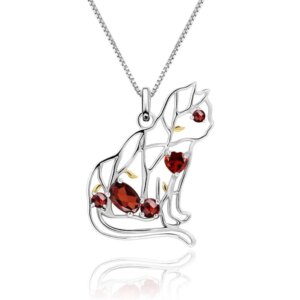Cats have a unique body temperature range that is essential to monitor for their health and well-being. This article will explore the normal temperature for cats, how to check it, and what to do if you notice any changes. By understanding your cat’s temperature, you can ensure they stay healthy and catch any issues early. Read on to learn more about the importance of temperature monitoring and how to do it effectively.
What is a Cat’s Normal Body Temperature
Average Temperature Range
The normal temperature for cats typically ranges from 100.5°F to 102.5°F (38.1°C to 39.2°C). This range is slightly higher than the average human body temperature, which is around 98.6°F (37°C). It’s important to note that a cat’s temperature can vary slightly throughout the day, and factors like activity level, age, and health can influence these fluctuations. At Cat Karma Creations, we understand the importance of keeping your feline friend healthy and happy.
Factors Affecting Temperature
Several factors can affect a cat’s body temperature. Age is one such factor, with kittens and elderly cats often having slightly different temperature ranges. The breed of the cat can also play a role, as some breeds may have a naturally higher or lower baseline temperature. Additionally, a cat’s overall health, including any underlying conditions, can impact their temperature. Environmental factors, such as temperature and humidity, can also cause fluctuations in a cat’s body temperature. We offer a range of cat-themed jewelry and gifts that can be perfect for celebrating your cat’s unique personality and health.
Importance of Monitoring
Regularly monitoring your cat’s temperature is crucial for their health. A cat’s temperature can be an early indicator of illness or distress. For example, a temperature above 102.5°F (39.2°C) may indicate a fever, while a temperature below 100.5°F (38.1°C) could be a sign of hypothermia. By keeping track of your cat’s temperature, you can catch these issues early and seek veterinary care if necessary. Understanding your cat’s normal temperature range can help you identify when something is amiss and take appropriate action. If you have any questions or need assistance, feel free to contact us at info@catkarmacreations.com.
How to Check Your Cat’s Temperature
Rectal Thermometer Method
Using a rectal thermometer is the most accurate method for checking a cat’s temperature. However, it can be challenging and may cause some discomfort for your cat. To make the process easier, follow these steps:
- Use a digital rectal thermometer specifically designed for pets.
- Apply a small amount of lubricant, such as petroleum jelly, to the tip of the thermometer.
- Gently insert the thermometer into your cat’s rectum, about 1 inch deep.
- Hold the thermometer in place for about 30 seconds or until it beeps, indicating the temperature has been recorded.
- Remove the thermometer and read the temperature.
It’s important to be gentle and calm during this process to minimize stress for your cat. If your cat becomes agitated, it’s best to stop and try again later or consult a veterinarian for assistance. Our team at Cat Karma Creations is always here to support you and your furry friend.
Ear Thermometer Method
An ear thermometer is a less invasive method for checking a cat’s temperature. While it may not be as accurate as a rectal thermometer, it is generally easier to use and more comfortable for your cat. Here’s how to use an ear thermometer:
- Use a digital ear thermometer designed for pets.
- Gently pull back your cat’s ear to expose the ear canal.
- Insert the thermometer into the ear canal, being careful not to insert it too deeply.
- Hold the thermometer in place for about 10 seconds or until it beeps, indicating the temperature has been recorded.
- Remove the thermometer and read the temperature.
Ear thermometers can be a good option for regular temperature checks, but they may not be as reliable for detecting subtle changes in temperature. If you need any advice or have questions, don’t hesitate to reach out to us at (800) 343-1604.
Non-Contact Thermometer Method
A non-contact thermometer is a convenient and non-invasive way to check a cat’s temperature. These thermometers use infrared technology to measure the temperature of the skin or inner ear without physical contact. Here’s how to use a non-contact thermometer:
- Use a digital non-contact thermometer designed for pets.
- Hold the thermometer about 1-2 inches away from your cat’s ear or forehead.
- Press the button to activate the thermometer and hold it steady for a few seconds.
- Read the temperature displayed on the screen.
Non-contact thermometers are quick and easy to use, but they may not be as accurate as rectal or ear thermometers. They are best used for quick checks and as a preliminary screening tool. For more information on our products and services, visit our website at https://www.catkarmacreations.com.
Signs of Fever and Hypothermia in Cats
Symptoms of Fever
A fever in cats is indicated by a body temperature above 102.5°F (39.2°C). Symptoms of a fever in cats can include:
- Increase in body temperature
- Loss of appetite
- Lethargy or weakness
- Increased heart rate
- Shivering or trembling
- Dehydration
- Vomiting or diarrhea
If you suspect your cat has a fever, it’s important to monitor their temperature closely and consult a veterinarian for further evaluation. A fever can be a sign of an underlying health issue, such as an infection or inflammation, and prompt treatment is essential for a full recovery. We understand the importance of your cat’s health and are here to help with any questions or concerns.
Symptoms of Hypothermia
Hypothermia in cats is indicated by a body temperature below 100.5°F (38.1°C). Symptoms of hypothermia in cats can include:
- Decrease in body temperature
- Lethargy or weakness
- Shivering or trembling
- Low heart rate
- Cold ears and paws
- Difficulty breathing
- Depression or confusion
If you suspect your cat has hypothermia, it’s important to take immediate action to warm them up and seek veterinary care. Hypothermia can be life-threatening, and prompt treatment is crucial to prevent serious health complications. Our team at Cat Karma Creations is dedicated to ensuring your cat’s well-being and can provide guidance and support.
When to Seek Veterinary Care
It’s important to seek veterinary care if you notice any significant changes in your cat’s temperature. If your cat’s temperature is consistently above 102.5°F (39.2°C) or below 100.5°F (38.1°C), or if they exhibit other symptoms of illness, such as lethargy, loss of appetite, or difficulty breathing, it’s best to consult a veterinarian. A professional can perform a thorough examination and provide appropriate treatment to ensure your cat’s health and well-being. For more information on our products and services, visit our website at https://www.catkarmacreations.com.
Tips for Maintaining a Healthy Temperature
Creating a Comfortable Environment
Maintaining a comfortable environment is essential for your cat’s health and well-being. Here are some tips to ensure your cat stays at a healthy temperature:
- Provide a warm and comfortable sleeping area, such as a cozy bed or blanket.
- Keep the room temperature at a comfortable level, around 70°F to 75°F (21°C to 24°C).
- Avoid exposing your cat to extreme temperatures, such as very cold or very hot environments.
- Ensure your cat has access to fresh water at all times, especially in hot weather.
- Provide shade and ventilation during hot summer months to prevent overheating.
At Cat Karma Creations, we offer a variety of cat-themed gifts and jewelry that can help you celebrate your cat’s unique personality and health. From stylish necklaces to charming brooches, our products are designed to bring joy and happiness to cat lovers everywhere.
Regular Check-Ups
Regular veterinary check-ups are an important part of maintaining your cat’s health. During these check-ups, your veterinarian can perform a thorough examination, including checking your cat’s temperature, to ensure they are in good health. Regular check-ups can help catch any potential health issues early and provide appropriate treatment. We encourage you to visit our website for more information on our products and services and to follow us on social media for tips and updates.
Seasonal Care Tips
Seasonal changes can affect your cat’s body temperature, so it’s important to take extra care during different times of the year:
- In summer, keep your cat cool by providing a well-ventilated environment and access to fresh water. Consider using cooling mats or fans to help regulate their temperature.
- In winter, ensure your cat stays warm by providing a cozy sleeping area and avoiding exposure to cold drafts. Use heating pads or blankets to keep them comfortable.
- During illness, monitor your cat’s temperature closely and provide appropriate care, such as keeping them hydrated and comfortable.
- During exercise, monitor your cat’s temperature to prevent overheating. Ensure they have a cool, shaded area to rest and access to fresh water.
At Cat Karma Creations, we are committed to supporting you and your cat’s health and happiness. Whether you need a beautiful piece of jewelry or a thoughtful gift, we have something for every cat lover. Follow us on Facebook and Instagram for more tips and updates.
Comparison of Temperature Measurement Methods
Different methods for checking a cat’s temperature have varying levels of accuracy and comfort. Here’s a comparison of the most common methods:
| Feature | Rectal Thermometer | Ear Thermometer | Non-Contact Thermometer |
|---|---|---|---|
| Accuracy | High | Moderate | Low to Moderate |
| Ease of Use | Moderate | High | High |
| Comfort for Cat | Low | Moderate | High |
| Cost | Moderate | Moderate | Low to Moderate |
| Suitability for Home Use | High | High | Moderate |
Each method has its pros and cons, and the best choice depends on your cat’s needs and your comfort level with the process. If you have any questions or need further assistance, feel free to contact us at sales@catkarmacreations.com.
Popular Quote
“A cat has absolute emotional honesty; human beings, for one reason or another, may hide their feelings, but a cat does not.” — Ernest Hemingway
Statistical Fact
According to the American Veterinary Medical Association (AVMA), approximately 95.6 million cats are owned as pets in the United States. This statistic highlights the significant role cats play in many households and the importance of understanding their health needs. For more information and resources, visit the AVMA website.
Three Tips for Maintaining Your Cat’s Healthy Temperature
- Regular Monitoring: Check your cat’s temperature regularly, especially if they are showing signs of illness or discomfort. Early detection can make a big difference in their health.
- Comfortable Environment: Ensure your cat has a comfortable and temperature-regulated environment. Provide cozy bedding and avoid exposing them to extreme temperatures.
- Hydration: Keep your cat hydrated, especially in hot weather. Fresh water is essential for maintaining a healthy body temperature and overall well-being.
Popular Questions
- What is a normal temperature for a cat? A normal temperature for a cat ranges from 100.5°F to 102.5°F (38.1°C to 39.2°C).
- How can I check my cat’s temperature at home? You can use a rectal, ear, or non-contact thermometer to check your cat’s temperature. Each method has its pros and cons, so choose the one that works best for you and your cat.
- What should I do if my cat has a fever? If your cat has a fever, monitor their temperature closely and consult a veterinarian. A fever can be a sign of an underlying health issue, and prompt treatment is essential.
- How can I keep my cat cool in summer? Provide a well-ventilated environment, access to fresh water, and consider using cooling mats or fans to help regulate their temperature.
- What are the signs of hypothermia in cats? Signs of hypothermia in cats include a decrease in body temperature, lethargy, shivering, and cold ears and paws. If you suspect hypothermia, take immediate action to warm your cat and seek veterinary care.
Final Thoughts About cats normal temperature
Understanding and monitoring your cat’s normal temperature is a vital part of their overall health care. By regularly checking their temperature and being aware of any changes, you can catch potential health issues early and ensure your cat stays happy and healthy. If you have any concerns, don’t hesitate to consult a veterinarian. Visit our website to find excellent gifts for cat lovers and follow us on social media for more tips and updates.
















